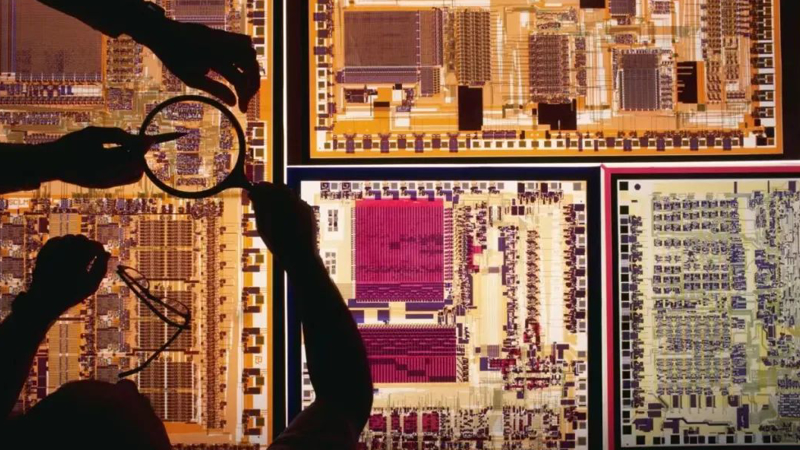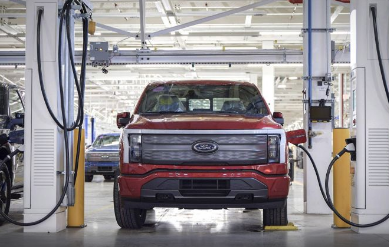Your location:Home >Automotive News >
Time:2022-07-11 11:39:00Source:
Once demand slows down, the contradiction between supply and demand is expected to ease. For chip manufacturers, the most obvious manifestation of the slowdown in demand is the decline in orders and the reduction in inventory.

The chip industry has recently become a hot and cold one.
On the one hand, the global chip shortage caused by the new crown epidemic has limited the production capacityof more and more car manufacturers, delayed the delivery of new cars, and everyone in the "chip shortage" is still at a loss.
On the other hand, chip companies have successively released pessimistic forward-lookingforecasts. Chip prices are sluggish, and quotations from major manufacturers have declined. The entire industry seems to have entered a new stage of the price cycle.
In the past two years, the world has been bitter for a long time.However, judging from the current supply and demand trend, the two-year semiconductor boom seems to have gradually cooled down.
Inventory levels across the semiconductor industry continue to soar as supply pressures continue to topple, but the cyclical law tells us that few players have been able to run all the way with the inventory and order levels of the past year.
The chip shortage has brought an unexpected impact on many industries, and it has also led to an unprecedented large-scale expansion of the chip industry chain.However, crazy expansion is always two sides of the same coin. The invisible giant of the cyclical law is quietly dialing Moving the supply and demand side of the situation.
01
Demand is cold, big factories warn
Memory chip giant Micron Technology announced last week that global smartphone sales in 2022 are expected to fall by about 5% from last year, while PC sales will drop by 10% due to a marked slowdown in consumer demand.
The company is reducingproductionof memory chips and expects revenue to fall by $1.5 billion to $2.3 billion in fiscal 2022.A Micron spokesperson directly used "recession" to describe the next market trend. If the supply and demand trend in the second half of the year is as bad as expected, the company will cut capital expenditures on wafer manufacturing equipment in fiscal 2023.
Intel's chief financial officer, David Zinsner, also hinted at the predicament at an investor conference in early June.
He revealed that the company may encounter some obstacles in the short term, such as inventory decline, and the current situation is much worse than expected this spring.Intel's troubles are mainly from the continued downturn in the PC market. Orders in the second half of the year were much lower than expected. In order to gain more market share, the company has decided to reduce the price of Alder Lake processors.
A month ago, Nvidia slowed its hiring, largely due to less-than-expected growth in its crypto mining and gaming businesses.In the past few years, the company's high-end graphics cards were favored by cryptocurrency and game makers, and were once popular in the market, but as demand in related fields fell, Nvidia had to reduce its system to ensure profitability.
It can be seen that the reason why the big chip manufacturers issued an early warning bomb is, on the one hand, the weakness of the PC and smartphone markets, and on the other hand, it is related to the slump in the cryptocurrency market.
After more than two years of rapid progress, the rush to buy electronic products has gradually faded away, and the hot scene of cryptocurrency mining chips being lined up to buy has gradually come to an end, and the demand has dropped, and many chip manufacturers will welcome A new round of tough times.
But it is worth mentioning that, in a horizontal comparison, the demand for chips in fields such as automobiles and cloud computing has not fluctuated much, and the price is still high.
This scene seemed familiar two years ago.
In 2020, the black swan of the new crown epidemic struck, and home office and isolation became the norm, which directly led to the explosive growth of the demand for laptops and smartphones, and sucked up the supply of automotive chips in the short term.
Two years later, rising inflation, the Russian-Ukrainian conflict and the lockdown of the Chinese market due to the new crown epidemic are the core factors contributing to the sluggish consumption, which directly affects the orders and rigid demand for consumer chip applications such as PCs and smartphones.
In other words, two years ago, automotive chips triggered a wave of large-scale core shortages. Two years later, consumer electronics chips have become the focus of price declines and giants cutting orders.The Wall Street Journal recently wrote that smartphones and PCs The decline in sales and the chip shortage of more than two years may be partially alleviated.
02
Chopping single tide, here we come
TSMC couldn't hold on either.
Last week, Taiwanese media broke the news that TSMC recently received order adjustment notices from three major customers, namely Apple, AMD and Nvidia.
It is reported that Apple has started the mass production of the iPhone 14, but the initial shipment target of 90 million units has been cut by 10% within the company. Therefore, Apple’s orders to TSMC have to be temporarily cut. about 10% off.
In addition, AMD and Nvidia have also adjusted and reduced orders to varying degrees from the second half of 2022 to the first quarter of 2023, and the reduced orders are mainly concentrated in the GPU field.Part of the reason for the order cut is mainly because the inventory is too high, which needs to be digested, especially the fading of the graphics card mining boom, which has a great impact on the compatible Nvidia RTX 30.
Yonhap News Agency recently cited a report from financial data firm Yonhap Infomax that Samsung Electronics has suspended new purchase orders in the second quarter and asked some suppliers to delay or cut component shipments by several weeks.
It's not just Apple that has been forced to cut orders."Nikkei Asia" previously broke the news that the three major domestic mobile phone manufacturers, OPPO, vivo, and Xiaomi, have notified their respective suppliers that they will cut orders by about 20% in the next few quarters.
An industry insider who did not want to be named told Nikkei Asia that Xiaomi has even lowered its sales target of 200 million units this year to between 160 million and 180 million units, and Samsung has also lowered its mobile phone shipments this year by about 105 million units. % to 275 million units.
The global smartphone market is facing a severe situation.
Data research agency Counterpoint Research released a report last month that in May this year, the cumulative sales of the global smartphone market fell 10% year-on-year and 4% month-on-month to only 96 million units.It is worth mentioning that this is the second time in the past 10 years that global smartphone sales have fallen below 100 million units.
The wave of cutting orders is coming, and the foundry is not immune to it.TrendForce released an industry report on wafer foundry capacity utilization.Although the current wave of order cutting is still concentrated in consumer applications, the capacity utilization rate of wafer foundries will gradually loosen, and the second half of the year may Encountered a wave of undervaluation of production capacity declines.
Those foundry companies that mainly produce consumer chip products will see their capacity utilization fall below 90% in the short term.
03
The New Normal: Structural Shortages
You know, chips are a typical cyclical industry.
Bank of America analyst Vivek Arya told Reuters last week that market downturns in the consumer electronics sector, which occur every 3-4 years, may occur again starting in 2022, which directly affects consumer electronics Chip market supply and demand.
Taking into account factors such as inflation, geopolitical turmoil and weak purchasing power, smartphone and PC consumption will usher in a new round of troughs, and this downward trend may continue until 2023.Bank of America has downgraded several stocks, including Texas Instruments, last week, considering where consumption is headed next.
Bloomberg recently quoted a set of data from market research firm Susquehanna Financial Group that the average global chip delivery cycle in June was 27 weeks, down from 27.1 weeks in May and the same as 27 weeks in April.
This data shows that the chip shortage that has caused headaches in the fields of automobiles, games, smartphones and cloud computing for a long time is finally showing signs of easing slightly.At least, from the perspective of core indicators such as delivery cycle and price curve, the trend of soaring has been initially contained.
Once demand slows down, the contradiction between supply and demand is expected to ease. For chip manufacturers, the most obvious manifestation of the slowdown in demand is the decline in orders and the reduction in inventory.The series of operations such as cutting orders, destocking, and lowering expectations that began in the second quarter are a signal that the contradiction between supply and demand has eased slightly.
However, structural shortages will persist for a long time.
The current chip market has reached a new stage of ice and fire. As mentioned at the beginning of the article, the demand for consumer electronics chips has declined collectively, and the prices represented by MCU chips are also plummeting.
However, we have also seen that many automakers including Toyota, Tesla and Volkswagen are still limited by chips, and the production capacity problem is a headache for management, which directly affects the growth rate of terminal sales.This type of chip, because of the large demand, the large gap, and the difficulty of product replacement, it is difficult for the price to drop sharply in a short period of time.
Since the beginning of this year, the entire electronic product market has continued to be in a downturn, the economy has been declining, the overall economy has been weak, and the city blockade caused by the domestic Omicron virus has affected logistics and production.
But most importantly, after Shanghai is unblocked, compensatory and deferred consumption will also be reduced.Compared with compensatory consumption after the Wuhan epidemic in 2020, consumption this year will be affected by greater economic losses, including chip-related consumer electronics and automobiles.
Considering the particularity of the consumer side this year, many manufacturers have regarded 618 as the "last straw" to save the 2022 annual performance.But looking at the final data, especially the sales of smartphones, PCs and wearables, how many of them are up to expectations?
Statement: the article only represents the views of the original author and does not represent the position of this website; If there is infringement or violation, you can directly feed back to this website, and we will modify or delete it.
Preferredproduct
Picture and textrecommendation

2022-08-04 12:57:12

2022-08-04 12:56:48

2022-08-04 12:56:28

2022-08-04 12:56:04

2022-08-04 12:55:36

2022-08-04 12:55:11
Hot spotsranking
Wonderfularticles

2022-08-04 12:54:48

2022-08-04 12:54:20

2022-08-04 12:53:54

2022-08-04 12:53:32

2022-08-04 12:53:03

2022-08-04 12:52:26
Popularrecommendations
